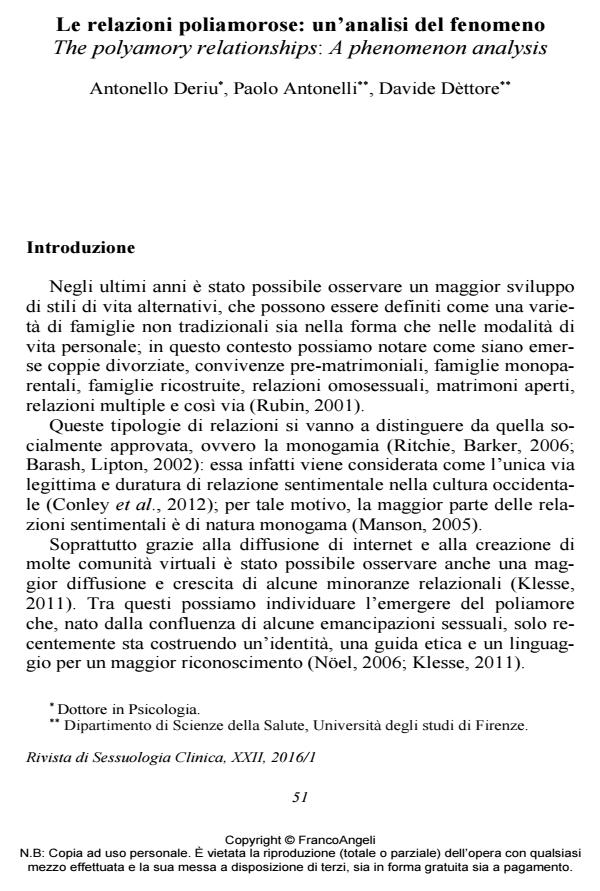Le relazioni poliamorose: un’analisi del fenomeno
Titolo Rivista RIVISTA DI SESSUOLOGIA CLINICA
Autori/Curatori Antonello Deriu, Paolo Antonelli, Davide Dèttore
Anno di pubblicazione 2016 Fascicolo 2016/1
Lingua Italiano Numero pagine 20 P. 51-70 Dimensione file 262 KB
DOI 10.3280/RSC2016-001003
Il DOI è il codice a barre della proprietà intellettuale: per saperne di più
clicca qui
Qui sotto puoi vedere in anteprima la prima pagina di questo articolo.
Se questo articolo ti interessa, lo puoi acquistare (e scaricare in formato pdf) seguendo le facili indicazioni per acquistare il download credit. Acquista Download Credits per scaricare questo Articolo in formato PDF

FrancoAngeli è membro della Publishers International Linking Association, Inc (PILA)associazione indipendente e non profit per facilitare (attraverso i servizi tecnologici implementati da CrossRef.org) l’accesso degli studiosi ai contenuti digitali nelle pubblicazioni professionali e scientifiche
Il poliamore (amare molti) è una pratica relazionale alternativa non monogamica in un clima di consenso, responsabilità e trasparenza. Attraverso l’analisi della letteratura accademica, unita a quella poliamorosa e agli articoli degli attivisti, si è potuto analizzare questo fenomeno. Sono stati esplorati lo sviluppo e la diffusione di una vera e propria cultura, nonché i valori presenti all’interno di questi rapporti: accordi relazionali, consenso, amore, impegno, fedeltà e comparsione. Essendo tali relazioni configurate come rapporti multi-partner, vengono analizzate le varie configurazioni che i partner possono assumere (relazioni e matrimoni aperti, polifedeltà, poligamia non religiosa, triadi, asessuali e poli-solisti), confrontando anche il fenomeno degli scambisti e degli anarchici relazionali. Inoltre vengono prese in esame le problematiche presenti all’interno di queste relazioni. Lo scopo è quello di cercare di approfondire al meglio il fenomeno, in modo da poter sviluppare delle ricerche future.
Parole chiave:Poliamore, relazione, non monogamia, amore, attrazione romantica, consensuale.
- The Kintsugi Art of Care: Unraveling Consent in Ethical Non-Monogamies Beatrice Gusmano, in Sociological Research Online /2019 pp.661
DOI: 10.1177/1360780418816103
Antonello Deriu, Paolo Antonelli, Davide Dèttore, Le relazioni poliamorose: un’analisi del fenomeno in "RIVISTA DI SESSUOLOGIA CLINICA" 1/2016, pp 51-70, DOI: 10.3280/RSC2016-001003